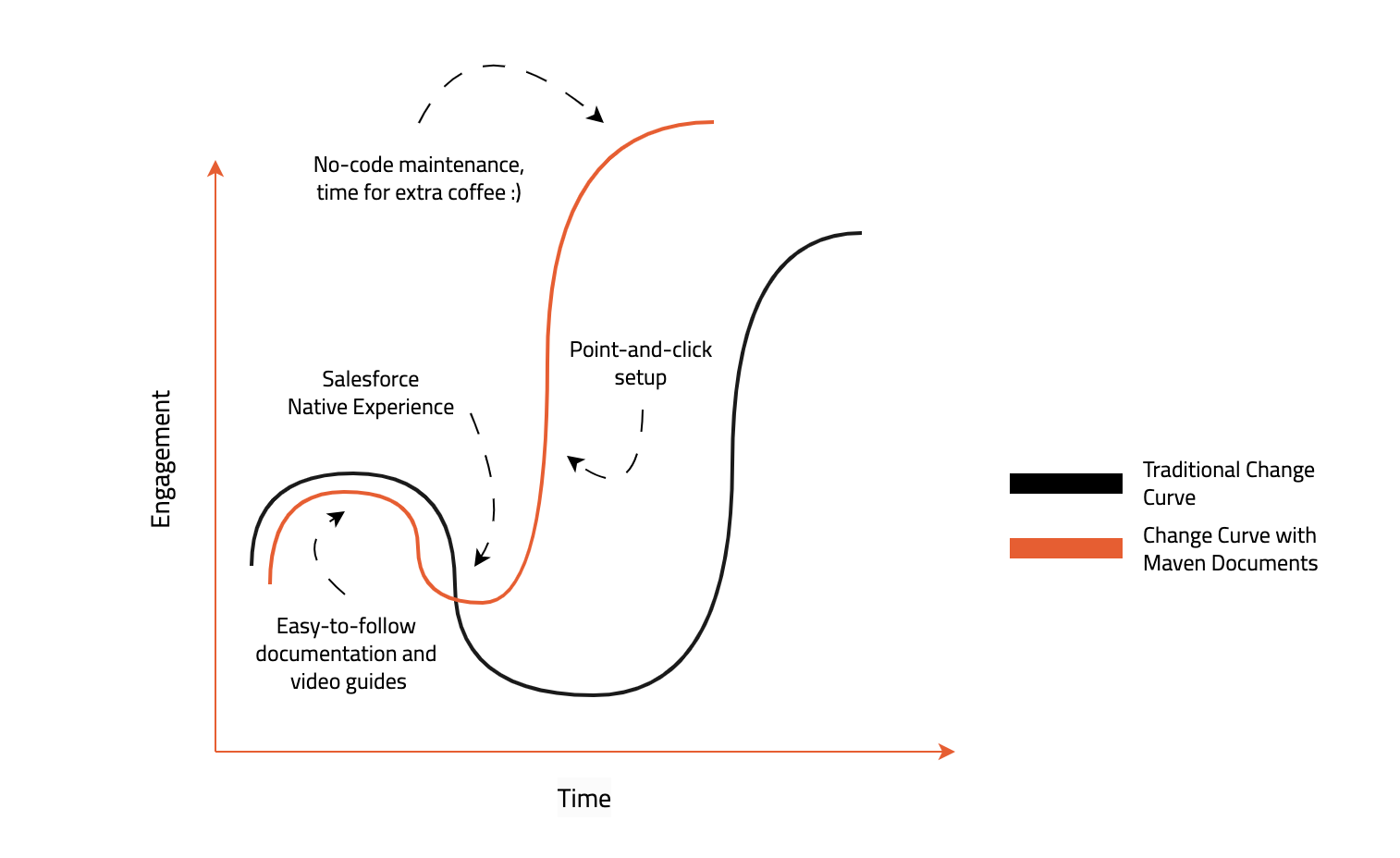And how Maven Documents can be there for you
As Heraclitus once noticed - change is the only constant in life, especially in the fast-moving and unpredictable world we live in today. Without a doubt, it influences modern workplaces where change is the synonym for growth. Organizations frequently undergo transformations, whether they're adopting new technologies, restructuring teams, or implementing new strategies. In the face of these changes, employees often experience a range of emotions and reactions. The Kübler-Ross Change Curve offers a valuable framework for understanding and managing these emotional responses, helping both employees and leaders navigate the tumultuous waters of change more effectively.
The Kübler-Ross Change Curve: A Brief Overview
Coined by psychiatrist Elisabeth Kübler-Ross in her groundbreaking work on grief and loss, the Kübler-Ross Change Curve describes people's emotional journey when faced with significant changes. Originally, the change curve was designed for other life-changing events but it soon became obvious that this model can be applied to different aspects of lives where change is involved.
The curve outlines a series of emotional stages that individuals typically progress through in response to change. These stages are:
.png)
-
Shock and Denial: The initial reaction to change often involves shock and disbelief. Employees may resist acknowledging the change and its potential impact on their roles and routines.
-
Anger: As the reality of the change sets in, frustration and resistance can arise. Employees may express anger at the perceived disruption of their established ways of working.
-
Bargaining: In this phase, individuals may attempt to negotiate with themselves or others to find ways to mitigate the impact of the change. They might seek compromises or solutions to maintain some semblance of familiarity.
-
Depression: As the full scope of the change becomes clearer, feelings of sadness or even depression may surface. Employees might withdraw emotionally as they come to terms with the altered landscape.
-
Acceptance: Finally, individuals start to come to terms with the change, finding ways to adapt and integrate it into their lives. This phase marks a turning point where employees begin to see the potential benefits of the change.
How Maven Documents can alter the curve

If you are thinking about implementing or changing the vendor for your automated document generation for Salesforce, here is how the curve will be smoother for your teams.
-
Easy-to-follow documentation and detailed video guides. One of the reasons employees feel anger and shock is because they feel thrown into the ocean to learn how to swim (and without a swimming coach to help them). Having good resources that can help your employees feel safer during the change is a turning point. With Maven Documents extensive documentation, you can easily give your team a hand when welcoming them to the change journey.
-
Salesforce Native Experience. During the Bargaining stage, employees try to find a way to keep things as familiar as they can be, and with Maven Documents it’s easily solved. Since we are a Salesforce native solution, the user experience remains 100% Salesforce native with the same buttons, fields, and layouts. Even the administration of the tool is Salesforce + familiar Google or Microsoft tools like Google Sheets, XSLX, etc.
-
Point-and-click setup. After you already bought employees’ trust and they are actively involved in the change process, having an easy-to-use tool will keep them happier and more open to future changes too. Make sure your team is not feeling tricked when involved in a “rainbow-fluffy-fancy” change that in reality is drowning and difficult to handle. Maven Documents point-and-click setup makes it easy for you because administrating and implementing the tool (aka change) is intuitive and straightforward.
-
No code maintenance, time back for things that matter. You can exhale now, change has been welcomed and the “new” is no longer scary but inspiring. You want to keep users in this state even after the change is over since it will influence how they react to new ideas in the future. With Maven Documents your team can get a lot of valuable time back that previously was wasted on the manual process for document generation.
Final Thoughts
The Kübler-Ross Change Curve offers a valuable lens through which to view the emotional journey that employees undertake during times of change. We all need to keep in mind that any tool we are trying to introduce is not about the technology, it’s always about the people - your team, your clients, your partners - what they can do and how they can feel when having this tool at hand or simply experiencing its outcomes.
While navigating change is never easy, understanding the psychological process behind it empowers both employees and leaders to work together toward a more adaptable and resilient workplace.

